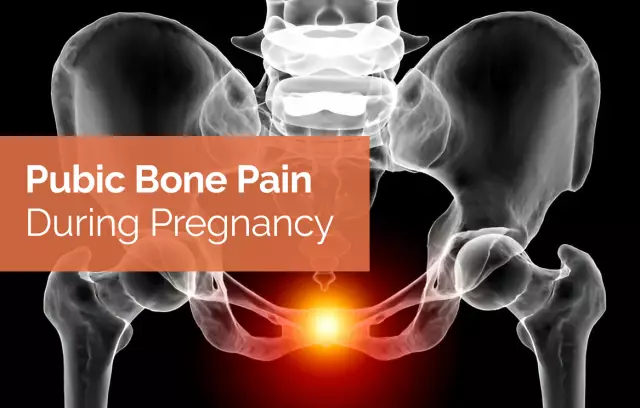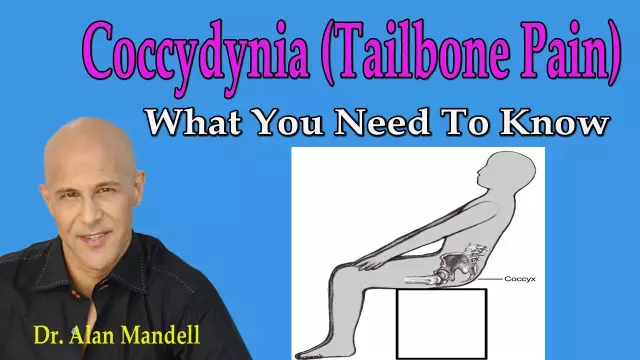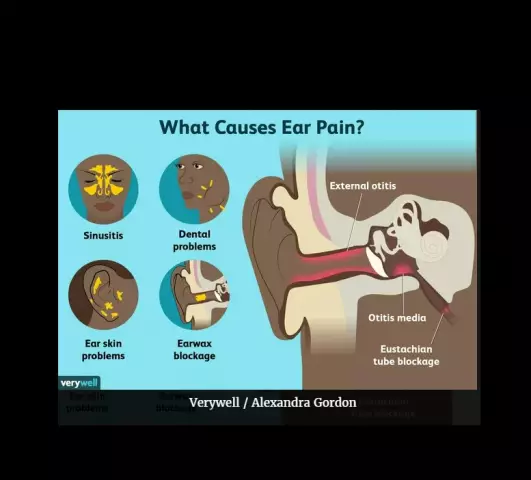- Author Rachel Wainwright [email protected].
- Public 2023-12-15 07:39.
- Last modified 2025-11-02 20:14.
Ilium
The ilium is one of the largest bones in the human skeleton. The right and left iliac bones are located in the upper-posterior parts of the pelvic bone.

The structure of the ilium
The ilium is paired. Therefore, both the left and right ilium have the same structure. They are divided into two parts: the body and the wing. The body is the short and thick section of the ilium. It merges with the ischium and pubic bones to form the acetabulum. The widened upper portion of the ilium forms the wing. The curved upper edge of the wing is called the iliac crest. On the front of the crest, there are two small outgrowths - the lower and upper iliac spines. A little below them is the large ischial notch. The inner concave part of the wing forms the iliac fossa, and the convex outer part forms the gluteal surface. On the inner surface of the wing of the ilium there is an ear-shaped surface, which is the place of articulation of the sacrum and the pelvic bone.
Fracture of the ilium
Iliac fractures usually result from a direct impact or compression of the pelvic bones. In children, a fracture in the wing of the ilium can also occur as a result of a sharp contraction of the muscles of the buttocks. The symptoms of a fracture are:
- Severe tissue edema at the site of the fracture;
- Sharp pain, aggravated by any attempt to move the leg;
- A sharp decrease in the function of the lower limb on the side of the lesion, i.e. with injury to the right iliac bone, the functions of the right leg are impaired, and with damage to the left, respectively, of the left.
The fracture of the ilium is accompanied by significant hemorrhage, while the hematoma extends over the entire lateral surface of the pelvis and the upper third of the thigh. Tension of the muscles of the anterior abdominal wall is often observed.
If a fracture of the ilium is suspected, the victim should be taken to the hospital in the supine position. A small roller is placed under the knees. If the fracture is not displaced, then local anesthesia of the fracture area is performed, the leg is placed in a special splint, and strict bed rest is prescribed for three to four weeks. For fractures with displacement, surgery is performed, the purpose of which is to match the fragments (reduction), after which the leg is placed in a splint and the injured patient is prescribed bed rest for a month. Then physiotherapy and massage are prescribed. Physical therapy is mandatory. Usually, the full restoration of the function of the lower limb is observed 1.5 - 2 months after the abolition of bed rest.
The iliac bone hurts: causes
In addition to injury, there are other reasons the ilium hurts. They are quite diverse:
- High physical activity when playing sports;
- Tumors of the iliac bones;
- Blood diseases (multiple myeloma, erythremia, chronic myeloid leukemia, acute leukemia, bone marrow diseases, Hodgkin's lymphoma);
- Infectious lesions of the ilium (tuberculosis, osteomyelitis);
- Metabolic bone diseases (deficiency of minerals and / or vitamin D, osteomalacia, vitamin B1 deficiency);
- Excessive secretion of cortisol, T3, or parathyroid hormone;
- The action of some drugs, in particular hormonal drugs;
- Prolonged bed rest;
- The inhibition of osteoblast activity caused by age;
- Congenital collagen synthesis abnormality (Paget's disease).
In addition, pain in the region of the right or left iliac bone can occur with osteochondrosis of the spine, herniated intervertebral discs. Therefore, if the iliac bone hurts, then you should not self-medicate, but you should consult a doctor. Only a doctor, after carrying out all the necessary medical examination of the patient, will be able to find out the true cause of the pain, make the correct diagnosis and prescribe the appropriate treatment.
Found a mistake in the text? Select it and press Ctrl + Enter.






